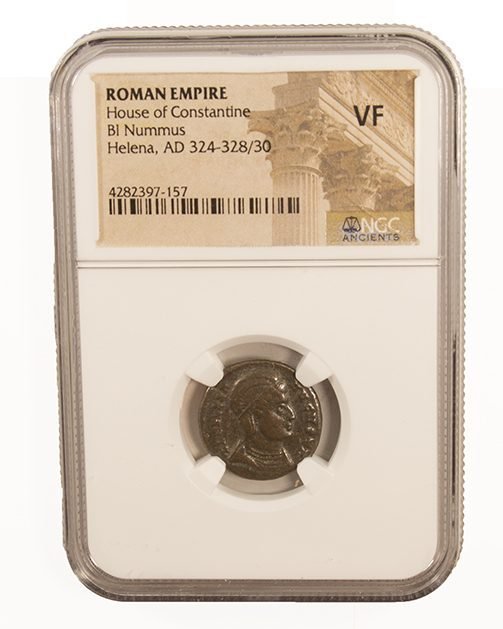 Image 1 of 8
Image 1 of 8

 Image 2 of 8
Image 2 of 8

 Image 3 of 8
Image 3 of 8

 Image 4 of 8
Image 4 of 8

 Image 5 of 8
Image 5 of 8

 Image 6 of 8
Image 6 of 8

 Image 7 of 8
Image 7 of 8

 Image 8 of 8
Image 8 of 8









Roman Coin of Julian II as Augustus (about 1660 years ago)
An important bronze issue from the brief but intellectually significant reign of Rome's last pagan emperor, known for his philosophical writings and religious reforms.
Front side (obverse): Portrait of Emperor Julian II with imperial crown
Back side (reverse): Roman imperial symbols and inscriptions
Technical specifications: Bronze coin, NGC certified
Historical significance: Known as "Julian the Apostate" by early Christians, Julian II was the last pagan emperor of Rome. He was also recognized as a notable scholar and philosopher who attempted to restore traditional Roman religious practices after a period of Christian imperial rule.
An important bronze issue from the brief but intellectually significant reign of Rome's last pagan emperor, known for his philosophical writings and religious reforms.
Front side (obverse): Portrait of Emperor Julian II with imperial crown
Back side (reverse): Roman imperial symbols and inscriptions
Technical specifications: Bronze coin, NGC certified
Historical significance: Known as "Julian the Apostate" by early Christians, Julian II was the last pagan emperor of Rome. He was also recognized as a notable scholar and philosopher who attempted to restore traditional Roman religious practices after a period of Christian imperial rule.
An important bronze issue from the brief but intellectually significant reign of Rome's last pagan emperor, known for his philosophical writings and religious reforms.
Front side (obverse): Portrait of Emperor Julian II with imperial crown
Back side (reverse): Roman imperial symbols and inscriptions
Technical specifications: Bronze coin, NGC certified
Historical significance: Known as "Julian the Apostate" by early Christians, Julian II was the last pagan emperor of Rome. He was also recognized as a notable scholar and philosopher who attempted to restore traditional Roman religious practices after a period of Christian imperial rule.
Julian[i] (Latin: Flavius Claudius Julianus; Ancient Greek: Ἰουλιανός Ioulianos; 331 – 26 June 363) was the Caesar of the West from 355 to 360 and Roman emperor from 361 to 363, as well as a notable philosopher and author in Greek. His rejection of Christianity, and his promotion of Neoplatonic Hellenism in its place, caused him to be remembered as Julian the Apostate in Christian tradition. He is sometimes referred to as Julian the Philosopher.[4]
A nephew of Constantine the Great, Julian was one of few in the imperial family to survive the purges and civil wars during the reign of Constantius II, his cousin. Julian became an orphan as a child after his father was executed in 337, and spent much of his life under Constantius's close supervision. However, the emperor allowed Julian freedom to pursue an education in the Greek-speaking east, with the result that Julian became unusually cultured for an emperor of his time. In 355, Constantius II summoned Julian to court and appointed him to rule Gaul. Despite his inexperience, Julian showed unexpected success in his new capacity, defeating and counterattacking Germanic raids across the Rhine and encouraging the ravaged provinces' return to prosperity. In 360, he was proclaimed emperor by his soldiers at Lutetia (Paris), sparking a civil war with Constantius. However, Constantius died before the two could face each other in battle, having allegedly named Julian as his successor.



























